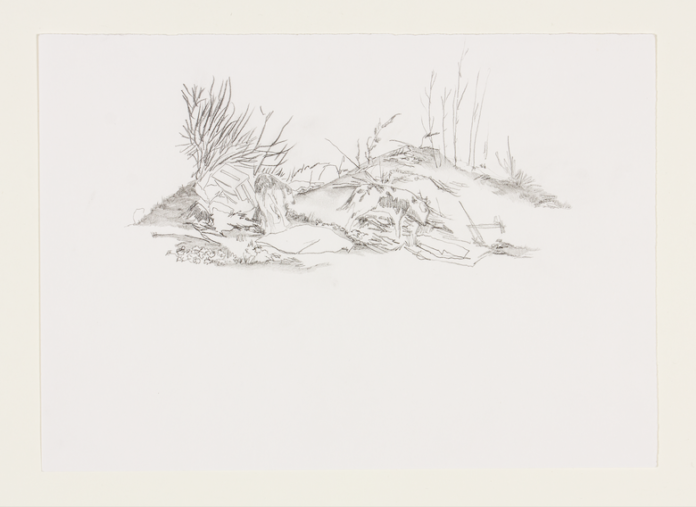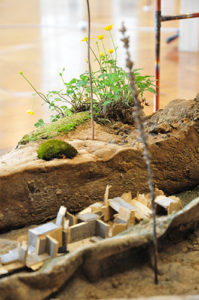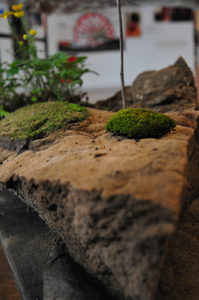Sinti and Roma, just like artists, often find themselves on the fringes of society. Somewhat similar to wild plants, one of the themes that the French-Romani artist Marina Rosselle presented in her works, and exhibited at the Kai Dikhas Gallery in Berlin last year. Somewhere between gravel and asphalt, wild plants find a way to sprout, turn green and bloom, and the artist, inspired by these plants, created works that also paint a personal picture of the reality of her surroundings. Born into a community of Roma travelers, her artistic opus finds its roots in family history and lifestyles, and her works attempt to describe this art of living, traveling, and successively appropriating places. Marina Rosselle is an artist who lives and works in Lille, France, and for whom spaces, the periphery, objects and materials are what encourage her to explore the ideas of vulnerability and lasting changes of matter. She graduated in Fine Arts at the Valenciennes School of Fine Art and Design in 2001, and obtained her Master’s degree at the same institute two years later. Rosselle draws special inspiration from places that continue to play an important role in shaping her identity, those places in which her community lives, that are multiply discredited or neglected and often transformed by urban development.
In your works you reject the folkloric representation associated with Roma people. Can you share the most common stereotypical representation of Romani women in art?
I am sensitive to dance, song, music, all forms of art. Roma and Gypsy culture is immensely rich and diverse. It’s not just folklore. Gypsy culture is not limited to the representation of caravans, musicians in bars, dancers in traditional costumes in bright colors. The exotic charm of the Gypsy woman has been exaggeratedly emphasized. We must break with the archaic genre scene fixing the role of the Gypsy woman and man.
The representation of the Gypsy woman in art allowed a variety of messages. In painting, the moral message seems predominant – the Gypsy woman is the opposite of the honest woman. They are often represented as thieves and seducers in scam scenes. I am thinking of the works of Nicolas Régnier, Joueurs de cartes (Card players), around 1625, or the work of Georges de La Tour La diseuse de bonne aventure (The Fortune Teller), around 1630. In another period Pierre-Auguste Renoir painted En Eté – La Bohémienne (In the Summer – The Bohemian) in 1868. In that painting, the woman doesn’t seem to me to be presented as an exoticized foreigner since the painter pays special attention to the young Gypsy. It is difficult to interpret precisely how the artists looked at their models.
How do you comment on the position artists and cultural workers, especially female ones? Would you say that work by female artists is still less valued than work by male artists?
Society is like that, unequal. Even if this changes a little, the art world is a reflection of society. It is not easy to be a Gypsy woman and an artist. It’s a daily struggle against contempt on all fronts. I think there is also a certain contempt for artists in general, male and female. In my career, I had the chance to present my artistic work in places of associative arts, which were places committed to exchange and diversity.
You studied art history. What can students learn from art history books when it comes to art and artists, and in general about the representation of the Roma community in Western art?
Twenty years ago, when I was an art student, I never had access to books on that subject. I remember having found a few lines on Serge Poliakoff’s Gypsy origins, that’s all. I did not know Gypsy artists. Later, I approached Gypsy associations or worked with Gypsy populations and then finally I found information about Gypsy artists in their libraries. I hope that nowadays Gypsy art is more accessible in schools. There is still a lot of work and actions to be done and carried out in order to move in this direction.
On the other hand, the representation of the Gypsy people in art is very present. Gypsies are emblematic figures of bohemia. Often associated with nature and travel, they have marked French and European painting.














